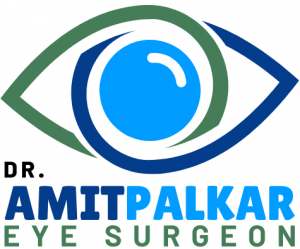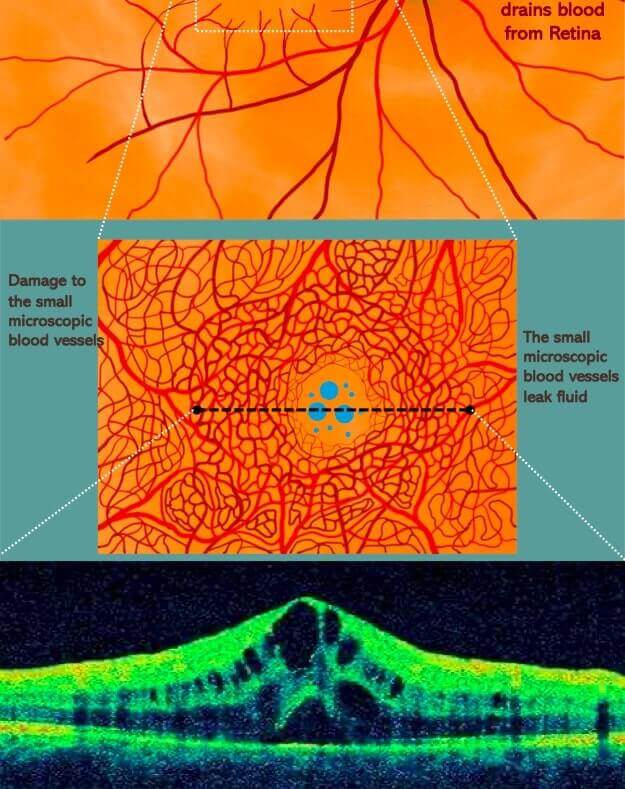Retinal Diseases
-
Diabetic
Retinopathy - Retinal Tears
- Glaucoma
What is a Retinal Tear?

The retina is a layer of nerve tissue that lines the inside of your eye. It consists of light sensitive cells that send signals to your brain and allow for you to see. The retina is very thin, and a tear in it is a very serious and potentially blinding problem. If you develop a retinal tear, it can allow for fluid to enter beneath the retina and cause a retinal detachment. Common symptoms of a retinal tear include the sensation of flashes of light in the eye and floaters. Sometimes a retinal tear can be associated with bleeding into the eye leading to hundreds of new floaters and/or a loss in vision if blood fills the eye.

The retina is a layer of nerve tissue that lines the inside of your eye. It consists of light sensitive cells that send signals to your brain and allow for you to see. The retina is very thin, and a tear in it is a very serious and potentially blinding problem. If you develop a retinal tear, it can allow for fluid to enter beneath the retina and cause a retinal detachment. Common symptoms of a retinal tear include the sensation of flashes of light in the eye and floaters. Sometimes a retinal tear can be associated with bleeding into the eye leading to hundreds of new floaters and/or a loss in vision if blood fills the eye.
Reasons to have a Retinal Tear?
Our eye is filled with a gel-like substance called the vitreous. As we get older this gel breaks down and becomes more liquefied. Eventually, usually after the age of 60, this process of liquefaction causes the gel to separate from the back of the eye. This event is called a posterior vitreous detachment (or PVD). A PVD is completely normal and eventually happens to everyone; however, it is also the time when most eyes have the highest risk of developing a retinal tear. This is because the vitreous gel becomes more mobile and the gel can pull and open up a tear in an area of the retina where is it more adherent to it.
There are several risk factors that put some people at a higher risk for developing a retinal tear. These include:
- Having spots of thinning in the retina
- Myopia or Near sightedness
- Past history of trauma to the eye
- Past history of retinal tears or detachment
- Past history of a retinal tear or detachment in the same eye
- Cataract or other interocular surgery in the past
Assessment of a Retinal Tear
Your eye surgeon will examine your eye very carefully to detect any possible retinal tears. Eye surgeon may need to press on your eye to examine your retina thoroughly. If a retinal tear is detected, treatment must be performed without any delay to prevent a retinal detachment.








